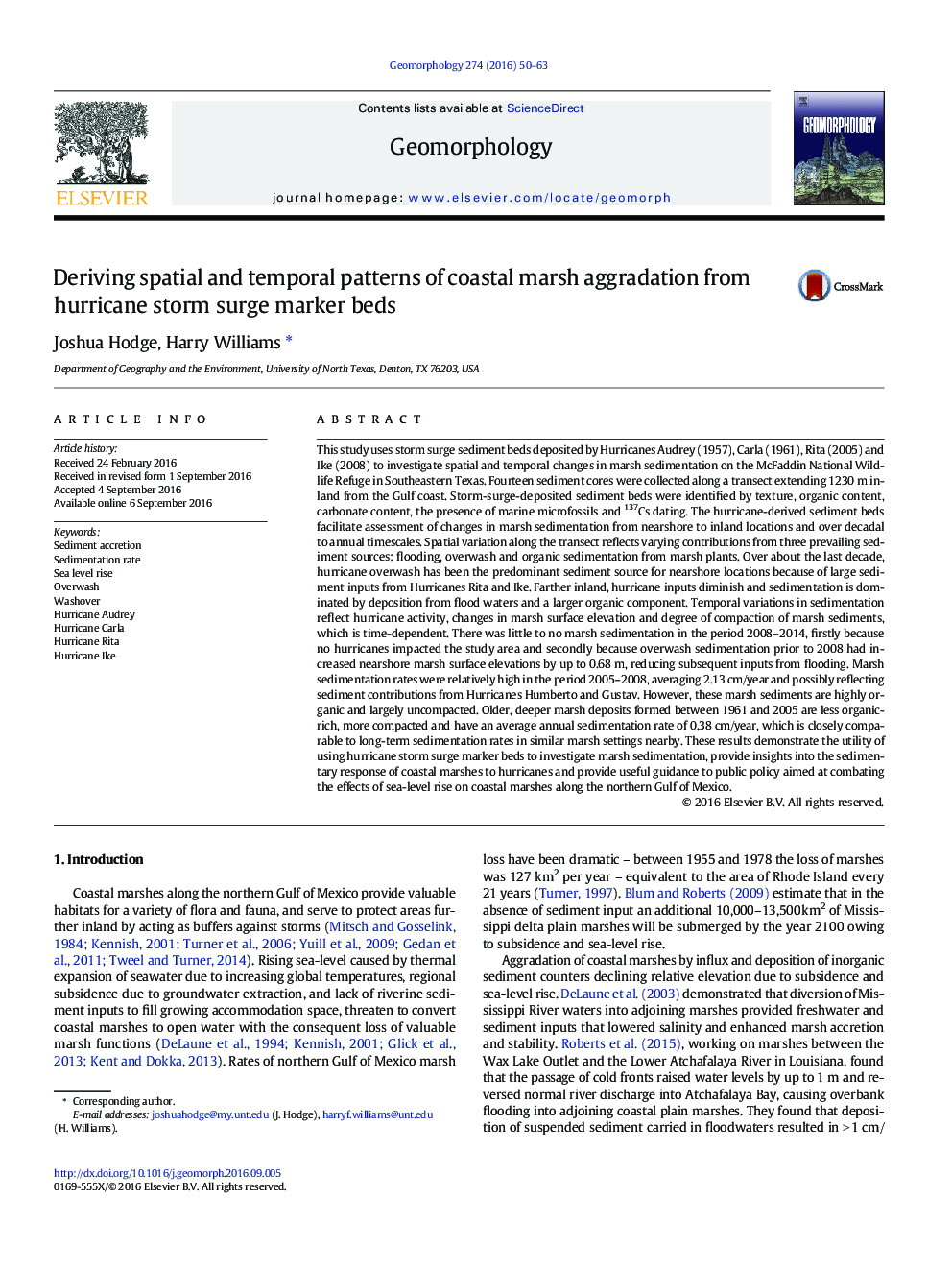| کد مقاله | کد نشریه | سال انتشار | مقاله انگلیسی | نسخه تمام متن |
|---|---|---|---|---|
| 4683908 | 1635375 | 2016 | 14 صفحه PDF | دانلود رایگان |
• Hurricane washover marker beds are used to investigate marsh sedimentation.
• Spatial variation reflects flooding, overwash and organic sediment sources.
• Temporal variation reflects hurricane activity, changes in elevation and compaction.
• Coastal policies should consider how anthropogenic barriers inhibit sedimentation.
This study uses storm surge sediment beds deposited by Hurricanes Audrey (1957), Carla (1961), Rita (2005) and Ike (2008) to investigate spatial and temporal changes in marsh sedimentation on the McFaddin National Wildlife Refuge in Southeastern Texas. Fourteen sediment cores were collected along a transect extending 1230 m inland from the Gulf coast. Storm-surge-deposited sediment beds were identified by texture, organic content, carbonate content, the presence of marine microfossils and 137Cs dating. The hurricane-derived sediment beds facilitate assessment of changes in marsh sedimentation from nearshore to inland locations and over decadal to annual timescales. Spatial variation along the transect reflects varying contributions from three prevailing sediment sources: flooding, overwash and organic sedimentation from marsh plants. Over about the last decade, hurricane overwash has been the predominant sediment source for nearshore locations because of large sediment inputs from Hurricanes Rita and Ike. Farther inland, hurricane inputs diminish and sedimentation is dominated by deposition from flood waters and a larger organic component. Temporal variations in sedimentation reflect hurricane activity, changes in marsh surface elevation and degree of compaction of marsh sediments, which is time-dependent. There was little to no marsh sedimentation in the period 2008–2014, firstly because no hurricanes impacted the study area and secondly because overwash sedimentation prior to 2008 had increased nearshore marsh surface elevations by up to 0.68 m, reducing subsequent inputs from flooding. Marsh sedimentation rates were relatively high in the period 2005–2008, averaging 2.13 cm/year and possibly reflecting sediment contributions from Hurricanes Humberto and Gustav. However, these marsh sediments are highly organic and largely uncompacted. Older, deeper marsh deposits formed between 1961 and 2005 are less organic-rich, more compacted and have an average annual sedimentation rate of 0.38 cm/year, which is closely comparable to long-term sedimentation rates in similar marsh settings nearby. These results demonstrate the utility of using hurricane storm surge marker beds to investigate marsh sedimentation, provide insights into the sedimentary response of coastal marshes to hurricanes and provide useful guidance to public policy aimed at combating the effects of sea-level rise on coastal marshes along the northern Gulf of Mexico.
Journal: Geomorphology - Volume 274, 1 December 2016, Pages 50–63
